DeBroglie matter waves are not the only waves that form integer multiples in bonded particles, Compton waves also form overlapping standing waves. This recent discovery paves the way for much more accurate predictions of elementary particle masses and coupling constants. The largest common factor between the Compton wavelength of the electron and the proton occurs within 2012 QED predicted values and enables an exact calculation of the Fine Structure Constant (137.035999209569).
The largest common factor possible is shared between the Compton wavelengths of confined up and down quarks in the proton and neutron, equal to the mass difference (1.29333 MeV) of these composite particles. This occurs at up-down quark mass values of 2.2431 and 4.8310 MeV respectively, well within QCD predicted values. The finding not only provides a much more precise estimate, it explains why quark mass is at the value it is.
Predicted Values of the Fine Structure Constant and Quark Mass
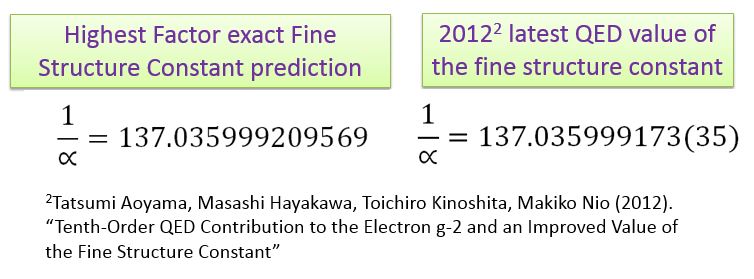
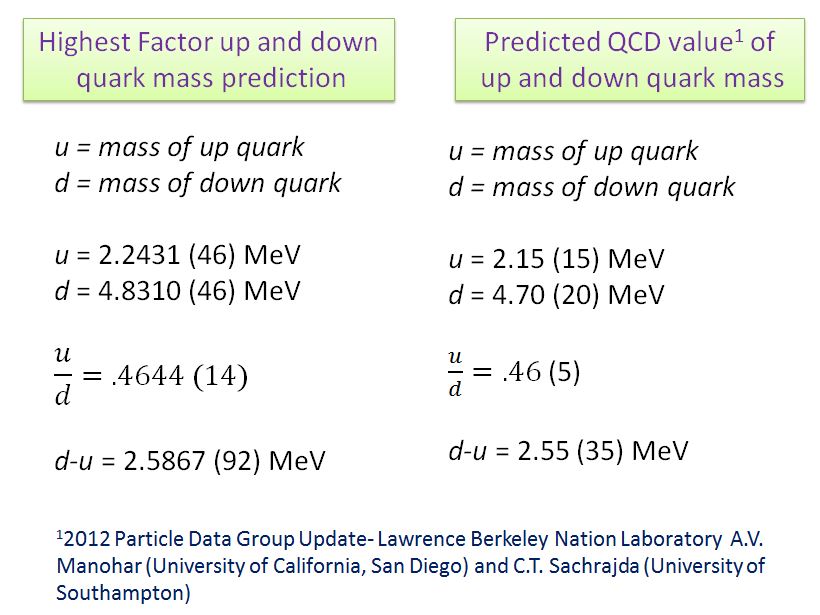
Youtube Videos
This website provides a brief explanation of my work, if you prefer the video versions check out the following links. For a deeper dive, download my attached papers. For even more information (like the source code to find common factors), feel free to contact me.
Integer derivations used in this analysis: www.youtube.com/watch?v=zOBLR5V6gx0
Exact calculation of the fine structure constant: www.youtube.com/watch?v=Kn0R_0G3anY
Precise calculation of quark mass: www.youtube.com/watch?v=IWw3Cb6fdH8
Hypothesis
Elementary particles absorb precise quantities of kinetic energy in order to bond in integer multiples of their total energy wavelengths in addition to their deBroglie momentum wavelengths.
This hypothesis is a natural extension of deBroglie momentum wavelengths forming standing waves in bonded particles. Compton wavelengths are inversely proportional to the rest mass of a particle, when a particle moves the Compton wavelength shortens by the amount of kinetic energy added to the particle; I call this the total energy wavelength.
Proton-Electron Model
The electron mass (0.5109989 MeV) shares a photon with a proton with an exact energy of 0.0000136 MeV so that its total energy (0.5109989 + 0.0000136) is an integer multiple (472th multiple) of the proton total energy (938.272056 + 0.0000136). The integer values are exact values, the MeV values are approximate.
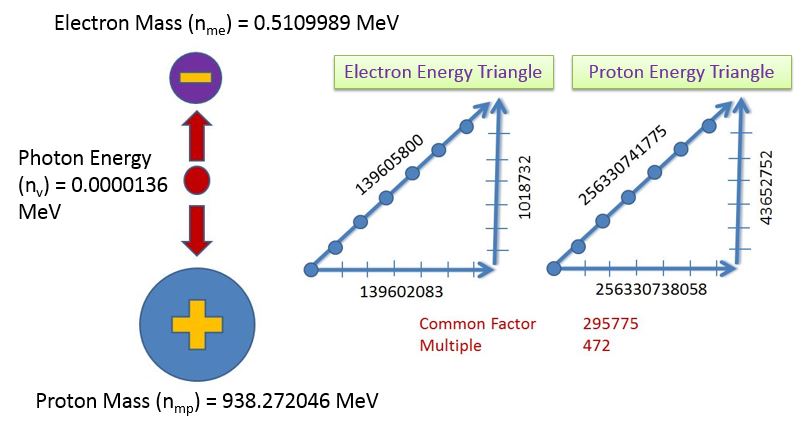
The Fine Structure Constant is related to the ratio of the of photon energy (3717 integer or 0.0000136MeV), and the electron mass (139602083 or 0.5109989 MeV) per the equation below. The Fine Structure Constant reciprocal 137.035999209569 is an exact value based on the largest mutiple (472) between the proton and electron Compton wavelengths adjusted for the kinetic energy added by the photon.
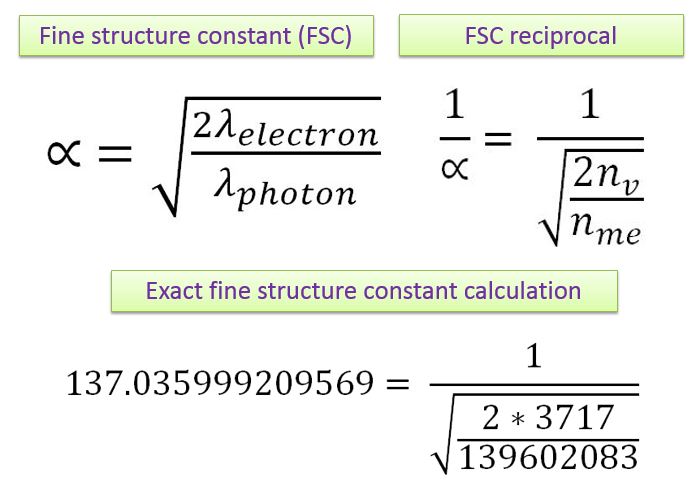
Up-Down Quark Model
The Standard model confirms that the proton and neutron consist of 3 confined quarks. The difference in mass between the proton and neutron is not entirely explained by the difference in mass values of the up and down quarks. This means the gluon energy in the proton is not the same as the gluon energy in the neutron.
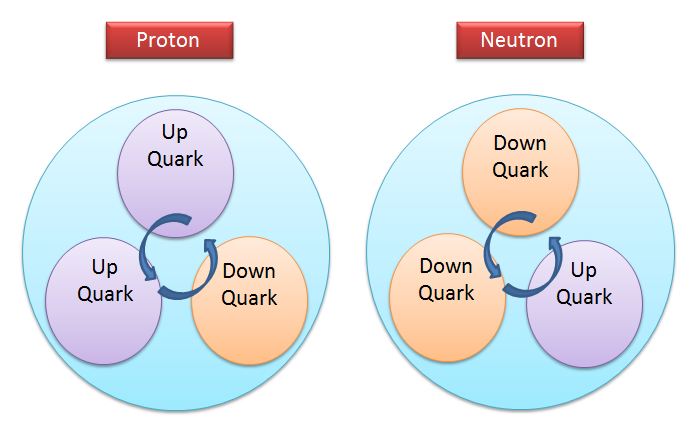
The gluon energy in the proton and neutron is shared between quarks; therefore the total energy in each quark is simply the gluon energy plus the quark mass. In the proton (see figure below), the total energy of the up quark equals its mass (2.243 MeV) plus the proton gluon energy (928.956 MeV) for a total of 931.199 MeV. The total energy of the down quark is 933.786 MeV (mass 4.830 MeV + gluon 928.956 MeV). A wide search range (0.1-35 MeV) of possible quark mass values were tested in order to find the highest common factor between all quark total energies using this simple model.
The highest common factor was 1.29333217 MeV, which is exactly equal to the mass difference between the neutron and the proton meaning this is also the highest possible common factor. The multiples of this factor in the proton are 720 in the up quark (720 X 1.29333217 = 931.199 MeV) and 722 in the down quark (722 X 1.29333217 = 933.786 MeV).
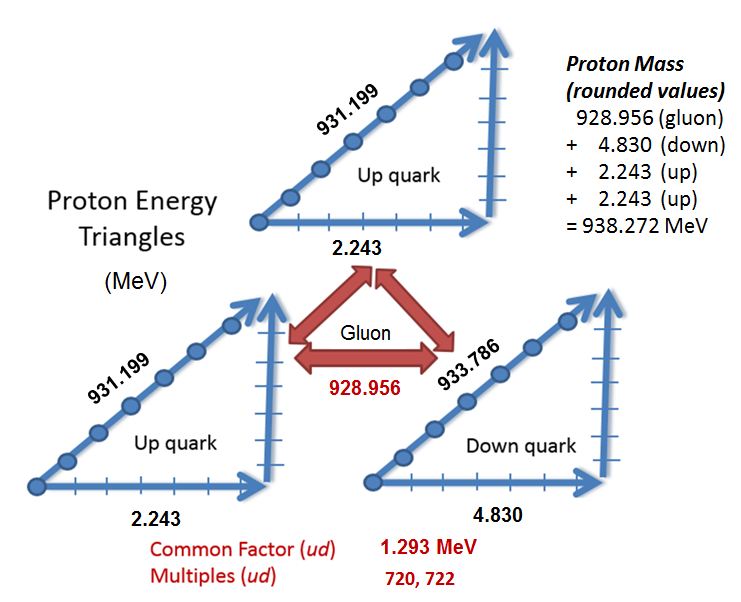
The quark mass search was concurrently run using the neutron model (see below). Again, the highest common factor was again 1.29333217 MeV, the difference in mass energy between the neutron and proton. The multiples of this factor in the neutron are 719 in the up quark (719 X 1.29333217 = 929.906 MeV) and 721 in the down quark (721 X 1.29333217 = 932.492 MeV).
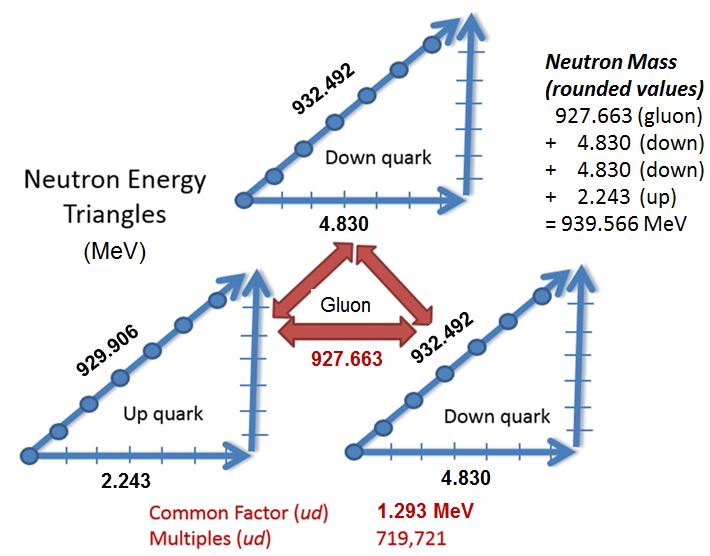
While concurrently searching for high common factors between the proton and neutron quark energy wavelengths, often times there was found a high common factor in one composite particle and not the other. Not only did the highest possible common factor (1.29333 MeV) occur in one particle, it occurred in both at a up-down quark mass difference value within QCD predicted values (2.5867MeV).
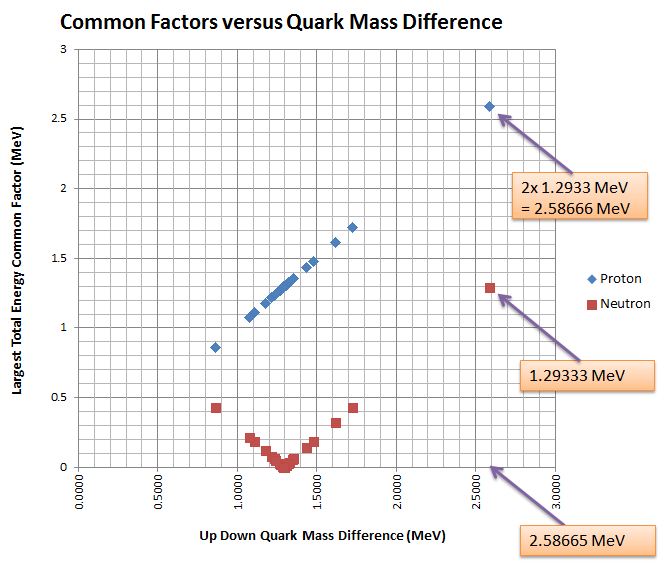
To summarize, the proton and neutron are composite particles that form at the exact energy which creates the maximum possible common factor between their total quark energies (mass plus kinetic energy). These multiples range from 719 to 722 X the mass difference between the neutron and the proton (1.29333MeV). This occurred at a down-up mass difference of 2.5866MeV, right where QCD predicted it should be.
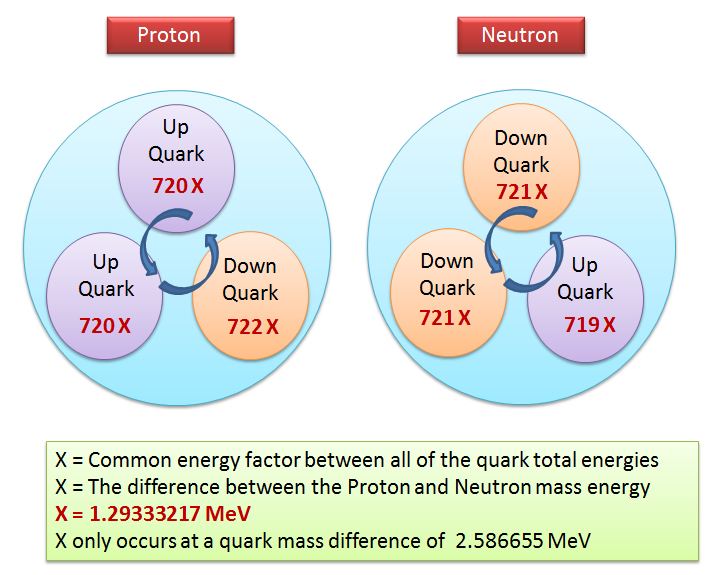
This hypothesis and resulting analysis makes several predictions regarding mass values/ratios and the Fine Structure Constant. As experimental results become more refined, these predictions may or may not be validated. Though my methods lie outside of established therories (QED, QCD), they are based on a solid hypothesis, and my predictions are well within Standard Model uncertainties. The Quark Mass Difference chart also makes it clear it would be highly unlikely that my results are arbitrary. Time will tell. In any case, I consider it an honor to have joined so many who have taken a crack at solving some of these great physics puzzles.
Brian Nelson
|